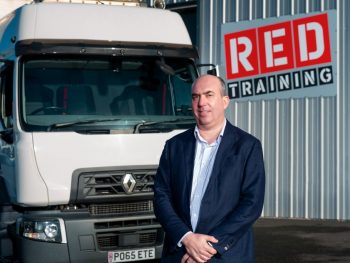Demand for commercial vehicle driver training has risen significantly due to post-lockdown delivery job demand.

Red Corporate Driver Training said it’s seen a 60% increase in training from corporate clients looking to upskill their workforce to meet the increased need for delivery drivers and to fulfil post-lockdown growth.
Its figures are in line with latest official DVSA figures which show a record number of practical CV driving tests being carried out. In 2022 (excluding December) a total of 106,243 practical tests were conducted across the C1 (medium vehicles), C1E (medium vehicles with a trailer), C (large vehicles) and CE (large vehicles with a trailer) categories. That’s up 52% on the figure of 70,124 for the whole of 2021. Pass rates remain at around the 60% mark.
Seb Goldin, CEO of Red Corporate Driver Training, said: “This reflects the pent-up demand from tests not being conducted during lockdown(s) as well as a general increase in people looking to retrain to meet the increased demand for drivers.”
Goldin added that there were a number of reasons for this increased demand for drivers, including many over-50s leaving the workforce since the pandemic, fewer drivers from the EU operating in the UK and “most importantly, the structural shift in our retail economy means that goods are being shipped to homes and businesses rather than collected from stores”.
Red also welcomed the DVSA’s response to tackling the testing backlog caused by the restriction of operations during the pandemic.
Goldin stressed: “The DVSA has done a tremendous job of reacting to this increase in testing and it feels like we are truly back to pre-pandemic levels of operation. We are certainly seeing a huge increase in demand from our corporate clients who are looking to upskill and train more drivers. We’ve taken on more trainers and vehicles to meet this demand.
“What’s also pleasing to note is that general levels of driver training among companies is remaining high, even though some aspects are optional – this shows that fleets recognise the impact that being safe and operationally efficient can have on their bottom line.”

